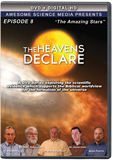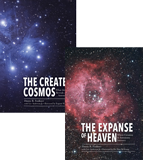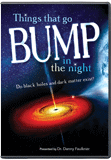Astrophotography II
In an earlier blog, I discussed my experimentation with astrophotography over the past six years. I concluded that blog with my first two attempts at making time-lapse videos from astrophotographs I had taken. I made both videos in the spring of 2019. They show the rotation of the sky around the celestial poles, one from the Northern Hemisphere and the other from the Southern Hemisphere. I continue that discussion here with more of my time-lapse videos.
Each summer, I help lead a raft trip through Grand Canyon. Some of the campsites we use give a wonderful view of the Milky Way sliding through a gap in the Inner Gorge of Grand Canyon throughout the night. This first video shows my attempt to capture this during my trip in late June 2019. The bright star in the video is Jupiter. You can see airplanes flying about, as well as some flashes of light from campers. You also may notice that the video is a little jumpy. The bouncing around came from slight bumping that the camera received as I pressed the shutter button for each exposure. This has been a problem, though I eventually figured out some ways to minimize this.
Video 1: The Milky Way from Grand Canyon in July 2019.
The second video shows my attempt to capture the same sort of video on my raft trip in August 2020. Again, the bright star is Jupiter. At the very end of the video, Saturn rises above the canyon wall to the left of Jupiter. However, there is something even more interesting in this video. About 2/3 the way through this video, the waning gibbous moon rose, brightening the sky and washing out the Milky Way. This is soon followed by moonlight creeping down the canyon wall on the right. You don’t see the moon because it is off to the left of the field of view. I would have loved to have continued taking photographs, but I couldn’t stay awake any longer. It was the first night of the trip, which meant I had gotten little sleep the night before, and it was already 2:00 a.m.
Video 2: The Milky Way from Grand Canyon in August 2020.
For several years I have done a program over Labor Day Weekend at Grand View Camp in eastern Arizona. At 8,300 feet, the dark sky there is even better than in Grand Canyon. Plus, the rocks don’t get in the way of the stars quite as much. My 2020 program was less than a month after my raft trip, so the waning gibbous moon again was going to rise, albeit a little earlier. I made this third video the night before camp began. I started taking photographs at twilight, so the video begins with the fading light of dusk. About the time the sky gets completely dark, the sky begins to brighten again as the waning gibbous moon rises. Again, the moon is off the left of the field of view. Soon, you can see the moonlight descend the hill on the right as shadows of trees shorten and rotate toward the north. Finally, you can see the lights of a camp staff member driving around doing chores in preparation for camp opening the next day. As in the previous video, notice Jupiter, with Saturn to its left.
Video 3: The Milky Way from Grand View Camp in September 2020.
The fourth video is another one I made at Grand View Camp in 2019, this time during a dark moon. I took these photos looking eastward over more than two hours in the early morning before sunrise. The slight glow from upper left to lower right is the Milky Way. This portion of the Milky Way is our nighttime winter view in the Northern Hemisphere. The winter Milky Way is not as impressive as the summer Milky Way. This is because, during summer, we are looking toward the galactic center, while in winter, we look in the opposite direction. But there is another glow in this video. Notice the triangular-shaped glow rising from the lower left to the upper right. This is the zodiacal light. The zodiacal light is sunlight reflecting off microscopic dust particles in the plane of the earth’s orbit. The zodiacal light is most pronounced in the early evening in the west in early spring or looking east in the early morning in early autumn. During the video, you can see the zodiacal light rise with the stars. As it does, the zodiacal light increases in intensity, reaching maximum as dawn approaches. I get the impression that the zodiacal light would be very impressive in an environment with no atmosphere to scatter sunlight prior to sunrise, such as on the moon.
Video 4: Zodiacal light from Grand View Camp in 2019.
I attempted to capture the zodiacal light again this year at Grand View Camp on the morning of September 5. As you can see in this fifth video, clouds interfered a bit, but I think the clouds make for an interesting effect.
Video 5: Zodiacal light from Grand View Camp on September 5, 2021.
Clouds similarly inferred with an attempt to capture the apparent motion of stars around the north celestial pole two mornings earlier, shown in the sixth video. I had thought that the clouds rendered this a hopeless attempt, but I was pleased with how this turned out. I’m beginning to think that rather than adversely affecting star time-lapse videos, intermittent clouds can enhance them.
Video 6: Polar motion from Grand View Camp on September 3, 2021.
The same morning, I took photographs of the rising moon to produce this seventh video. Though the moon was a thin waning crescent and hence not very bright, it is overexposed in this video. I like the motion of the clouds in this video too.
Video 7: The rising moon from Grand View Camp on September 3, 2021.
Encouraged by how these nighttime videos with clouds turned out, I wondered if I should try daytime videos. I made the eighth video from photographs I took the following morning, looking southeast from just before sunrise to well in the afternoon. If you look closely, you can see horses moving around in their pen to the right of center in the foreground. Campers and vehicles appear on the road from time to time. I even make a late appearance on the basketball court to the far right. I was so happy with this video that I made the ninth video the next day. This video runs for twelve hours from sunrise to near sunset.
Video 8: Daytime clouds at Grand View Camp daytime on September 4, 2021.
Video 8: Daytime clouds at Grand View Camp daytime on September 5, 2021.
I have made a few time-lapse videos much closer to home. In July 2020, Comet NEOWISE graced the skies, first in the morning and then in the evening. This was the first impressive naked-eye comet in years. The tenth video is one of two time-lapse videos of Comet NEOWISE that I made from photos I took in the western sky one evening here in Northern Kentucky. To capture the comet with a good scale, I had to use the zoom on my camera lens. With a much narrower field of view, the bouncing around that I mentioned earlier was magnified, rendering this video a little jumpy. Later I realized that if I had used my electronic remote, there wouldn’t have been any jumping around. You live and learn.
Video 10: Comet NEOWISE July 17 2020
People who regularly read my blogs know that one of my passions is Red River Gorge. Answers in Genesis now sponsors field trips to Red River that I have the pleasure of leading. We call these field trips Arch Encounter. Being a relatively dark site, I’ve long wanted to attempt astrophotography in Red River. Being a two-hour drive away, this requires primitive camping while there. That isn’t a problem for me, but there are other impediments. Given that Red River is in a deep forest, the trees get in the way of the stars. I’ve found that Chimney Top Overlook offers a good view of most of the sky. Astrophotography requires very clear skies and a dark moon. Timing these conditions with when I have a free schedule to take a day or two to do this is tricky. I finally had the opportunity to do this on the evening of September 9. As it turns out, clouds moved in around sunset. I took photographs for a couple of hours, but since I could see only a few of the brighter stars through the clouds, I finally gave up and went to sleep. I wish now that I had stuck with it. As this eleventh video shows, the camera managed to record many stars through the thin clouds that my eyes could not see. The cloud motion makes for a very interesting video.
Video 11: The Milky Way from Red River Gorge on September 9, 2021.
On the night of September 26–27, I had the opportunity to do this again. The twelfth time-lapse video spans nearly six hours from dusk to early morning. Early on, you can see lights from campers at Hanson’s Point on the right. The lights left of center are from people who had ventured on top of Half Moon Rock. I thought they were camping, but you can see them make their way back to their campsite off to the left of the field of view. I’ve hiked over to Half Moon Rock during the day, and since the ascent looked treacherous, I decided not to climb it. I can’t imagine climbing down in the dark. As with some of my Milky Way videos from Arizona, the waning gibbous moon rose off to the left. As before, the Milky Way was washed out, and you can see moonlight descend into the hollow of Chimney Top Creek and illuminate Half Moon Rock. The bright star is Jupiter, and Saturn is the second brightest star to the right of Jupiter. At one point, Jupiter brightens into a blob of light. That was caused by dew forming on the camera lens. A little later, a slight breeze removed the dew. The bright moonlight illuminated the few clouds, as well as some fog in the lower elevations.
Video 12: The Milky Way from Red River Gorge on September 26–27, 2021.
You may wonder how I was able to take nearly 500 photographs over nearly six hours. In July, I bought a new camera. I had been using a Nikon D3200. I now have a Nikon D5600. One of the additional features of the newer camera is that I can program it to take photos, even while I am asleep. I sat around eating dinner and doing other things while the camera slaved around for nearly three hours. When it finished, I restarted the camera and went to sleep. I awoke a little before 4:00 a.m. When I returned to Chimney Top Rock, I found that fog filled the valley on the other side of the Overlook. Therefore, I took more photographs to make another time-lapse video. But I’ll continue the story in another blog.
Recommended Resources

Answers in Genesis is an apologetics ministry, dedicated to helping Christians defend their faith and proclaim the good news of Jesus Christ.
- Customer Service 800.778.3390
- © 2024 Answers in Genesis





